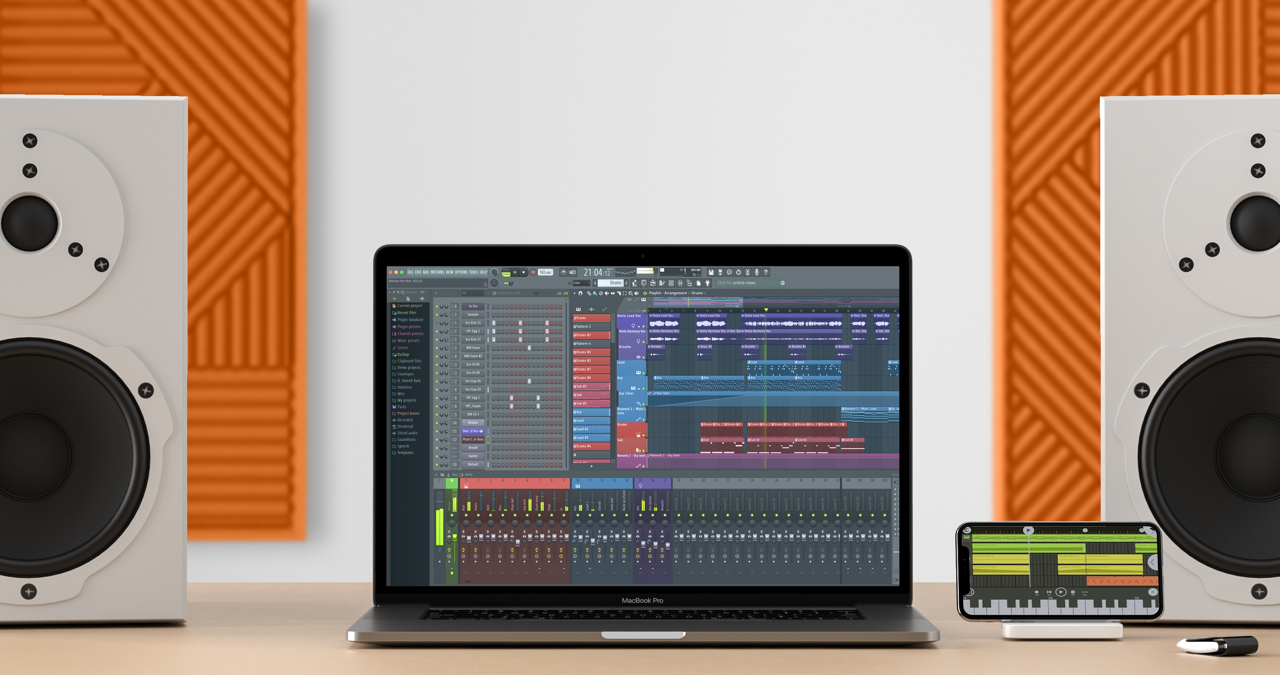
If you are new to making music then here's where you'll learn about the basics, and how it's easy for anyone to make music with a simple set of tools and a few words of advice. Today, we're looking at the one tool that most music producers use to make music in the 21st century: the DAW or Digital Audio Workstation.
A DAW is the central software hub wherein all your music-making projects are written, recorded, mixed and finalised. You simply define the instruments you want to use to produce a tune, record them track-by-track and then arrange and mix them into a song, track or simple tune.
Instruments can be real ones, played by you (or your band), and recorded into your computer with an audio interface. More easily, you can also create your tune with virtual instruments, all accessed from within your DAW.
Virtual instruments are capable of imitating any real instrument, you'll be able to find virtual pianos, orchestras, synthesisers, drummers, guitars… you name it, instruments in a DAW can replicate any proper instrument or sound from outside a computer.
The next major advantage of a DAW is that it lets you record these instruments into tracks - usually one track per instrument - and then arrange these tracks into complete songs. And that is essentially it - the crux of music production using a DAW in the 21st century!
What is a DAW?
DAWs: What are they?
In many ways, a DAW is like your own virtual band or orchestra - a set of instruments which you control without needing to actually physically play any of them.
Drums, for example, can be programmed into a DAW using its sequencer, which makes creating complete drum loops and parts easy with a mouse. Similarly, if you can't play keyboards or guitars, a DAW lets you either play the notes in slowly using a MIDI controller or draw each note individually using the DAW editor - most often resembling a virtual piano keyboard.
The advantage of a DAW is that because this is done digitally on your Mac, PC or tablet, you can easily copy or repeat notes, melodies and song parts, record notes in slowly or quickly (depending on your playing skills), and then mix the results using a suite of digital effects.
A DAW simply lets anyone who can use a computer make music regardless of their musical-playing abilities or understanding of music theory.
Every DAW allows you to do this to some degree or another. The biggest DAWs include Ableton Live, Steinberg Cubase, Apple's Logic Pro, Image-Line's FL Studio, Bitwig Studio, Cockos Reaper, Reason Studios Reason and Avid's Pro Tools.
All of these DAWs have instruments, tracks to put them on and ways to arrange the tracks into songs, the very definition of a DAW in a nutshell. Now it's time to dig a little deeper…
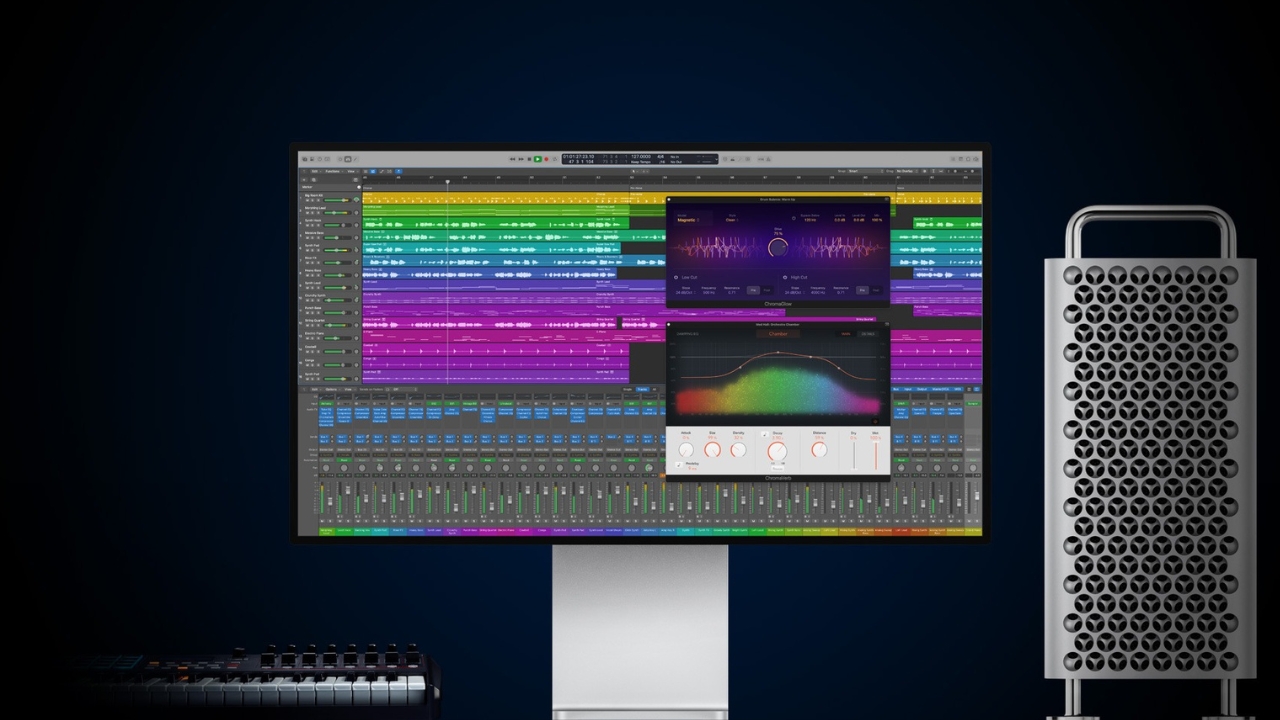
Why do you need to know about DAWs?
Why do I need to know about DAWs?
The DAW (Digital Audio Workstation) is, we'd argue, the most important tool you will come across if you want to make music in the modern world, It's a lofty claim but if you want to make music with a computer - which the majority of today's music producers use to one degree or another - the DAW really is the central component to any song's production.
While you don't need to know everything that your DAW does (because some have extraordinary feature sets that few people totally master) knowing the basics of how a DAW works will help your music production no end. In fact, if you master these basics - maybe just 10% of your DAW's power - you will be able to create pro tracks in no time, we promise!
Every DAW comes packed with the following:
1. Virtual instruments - these make up your virtual backing band
2. An arrangement area - this is the area where you layout the tracks.
3. A mixer - to mix the above
4. Virtual effects - to use on every track.
A DAW simply makes composing, mixing and arranging music into songs a logical and often inspiring process.
Once you get your head around a DAW's tracks, you will understand the majority of how DAWs work.
DAWs break down song tracks into their individual instruments as we have discussed, but these can also be in two forms: MIDI or audio.
A DAW's MIDI tracks comprise individual notes which can be dragged around an editor to create tunes or alter existing ones. You can change the loudness of notes and a lot of other ways of how they play back, but these MIDI notes can trigger any kind of instrument.
You might create one MIDI track to play and record some notes to trigger a virtual piano, for example. Then you can simply copy this MIDI track and have them trigger a virtual guitar. Or have them trigger both instruments simultaneously - it's up to you!
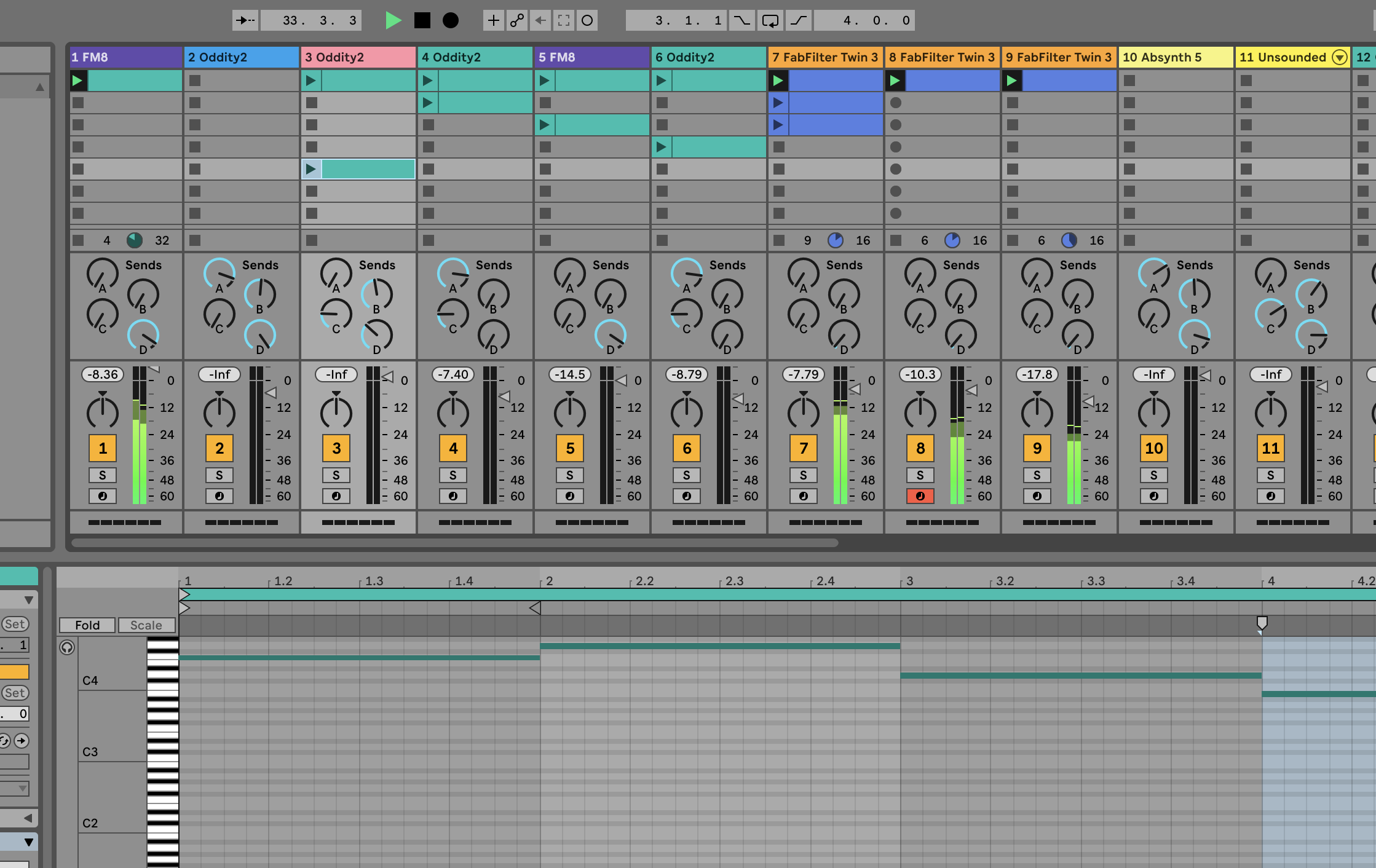
Audio tracks comprise recordings of real-world audio. This might be your own singing that you have recorded into your DAW via a microphone, for example. Or it might be someone's real guitar playing or drumming, again via a microphone and audio interface.
Audio tracks can also be 'samples' of any sound - orchestras, vocals, bird song, anything! Simply load in a sample from a sample collection you might have bought or downloaded, and mix it with your MIDI track to start making a song.
It's incredibly easy to set these tracks up. Soon you will have all of your song parts as audio or MIDI tracks, and can then arrange them into a complete tune using the DAW's arrangement window.
Track by track (usually from top to bottom) your song will start to take shape, moving from its intro on the left to its outro to the right.
You can mix each track, increase levels, add effects and a lot more - a DAW makes this way of producing a song easy, and that's why you need one in your music production life!
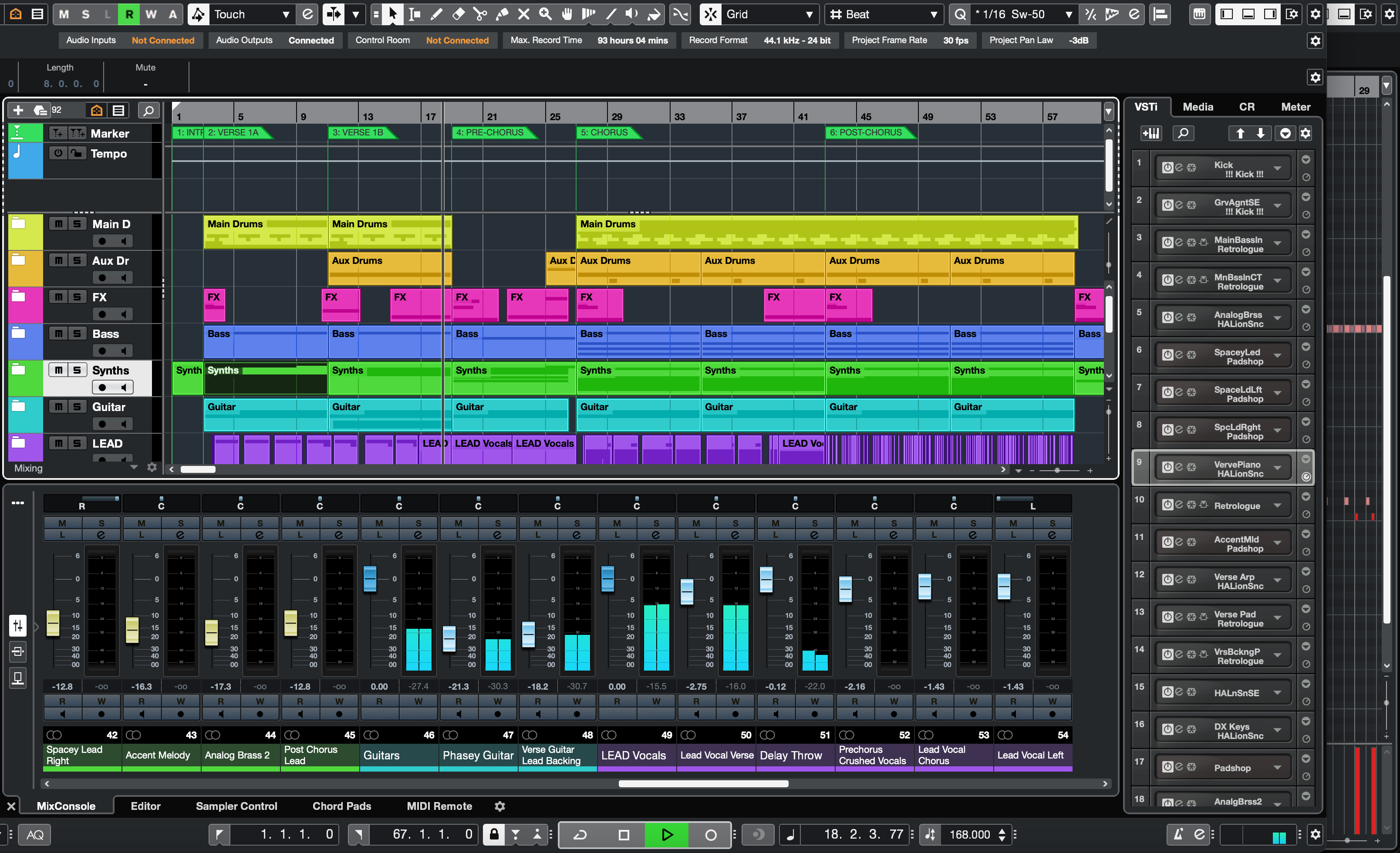
10 DAW key points
10 DAW key points
1. DAWs let you create complete tracks, mixing their own instruments with any sounds, instruments, singing or any audio you like from the outside world. You don't need to be able to play any instrument to do this, nor do you need to know about music theory.
2. DAWs can run on any computer - Mac, PC Linux - most tablets (Android, iOS), and even mobile phones! You can pay anything from nothing to several hundred pounds/dollars for a DAW.
3. The idea of using a DAW is that anyone can make music with one if they can use a mouse and cursor. However, if you are more musical, or prefer a physical playing and recording experience, DAWs work with any MIDI controller so you can play notes in using a proper keyboard if you like, or a vast range of other hardware devices like drum pads and grid controllers.
4. Every DAW comes bundled with virtual instruments to help you create your tunes, and virtual effects to help you mix them. But you can easily add more so called 'third-party' instruments and effects to your DAW studio. Instruments range from incredibly realistic and complete orchestras, to rocking band instruments (guitars, bass, drums etc), to virtual synths for EDM/dance music.
Extra effects might be mix effects like reverb, compression and EQ, or additional creative multi-effects that can give you an incredibly inspirational sound. We have the best instruments and effects rounded up here.
Drums
Guitars
Synths
Free synths
Effects
5. Once you are happy with your tune, you can export some parts or all of it for playback outside of your DAW. You can export individual tracks of the tune (drums, guitars and so on) or several highlighted tracks together, or, of course, the entire song as a complete mix so you can play it to your friends or test to see how well it sounds on other speakers, headphones or music streaming services.
6. All DAWs let you mix down your music into a stereo track for playback - sometimes even a surround sound track which will usually require more speakers to enjoy it.
Most DAWs also let you mix your music down into specific audio formats which include the common .WAV and .AIFF formats, or the lower quality .mp3 file format.
You can also mix music down in other formats that allow you to load it into other DAWs: Ableton Link, GarageBand and more. Other export methods include exporting a MIDI file of a song part or track so you might have come up with a great melody or drum part, for example, and want to send the notes and beats to a collaborator to work on.
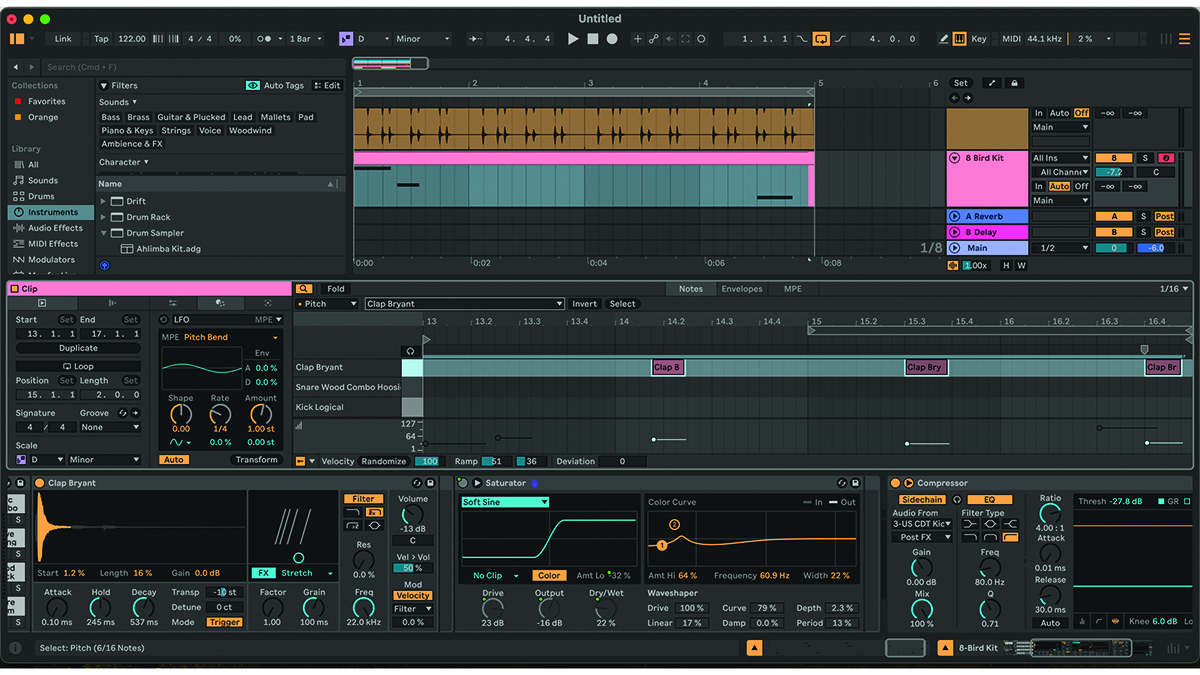
7. You may hear DAWs also referred to as 'sequencers'. This is because DAWs started out by sequencing MIDI notes together track by track. It wasn't until computer processor power increased for them to be able to handle audio tracks that they became known as DAWs (Digital Audio Workstations).
8. Which DAW is the best? This is the question we get asked the most. While most let you create pro sounding tracks in similar ways we always say it's best to try out the (usually free) demos to get a feel for each DAW, especially as most offer such similar features that your preference will usually be defined by workflow, something you can only work out by trying before you buy.
9. That said there are distinct DAW styles. Most have tracks laid out top to bottom, but some like Ableton Live focus on clip launching where you will create individual cells of notes or audio loops which can then be linked together to create tunes. Logic and Bitwig also feature this as an option and it's a great way to get tunes together fast, although perhaps suited to more electronic and cycling genres than others.
10. Some of the best advice when using a DAW includes learning the key commands as with most DAWs it is all about having a smooth workflow. Learning a few shortcuts like these really can speed up your workflow and keep those creative juices flowing.
Finally, while we said that you can get a pro tune going with just a fraction of the knowledge of how to use your particular DAW, it is worth further manual reading and deep diving to explore more of your DAW's features. Many come with some great compositional aids like chance recording, arrangement layouts, chord progressions and beat creation options to either stimulate ideas or allow you to turn your own inspirational thoughts into fully-featured songs. Happy DAW music creation!
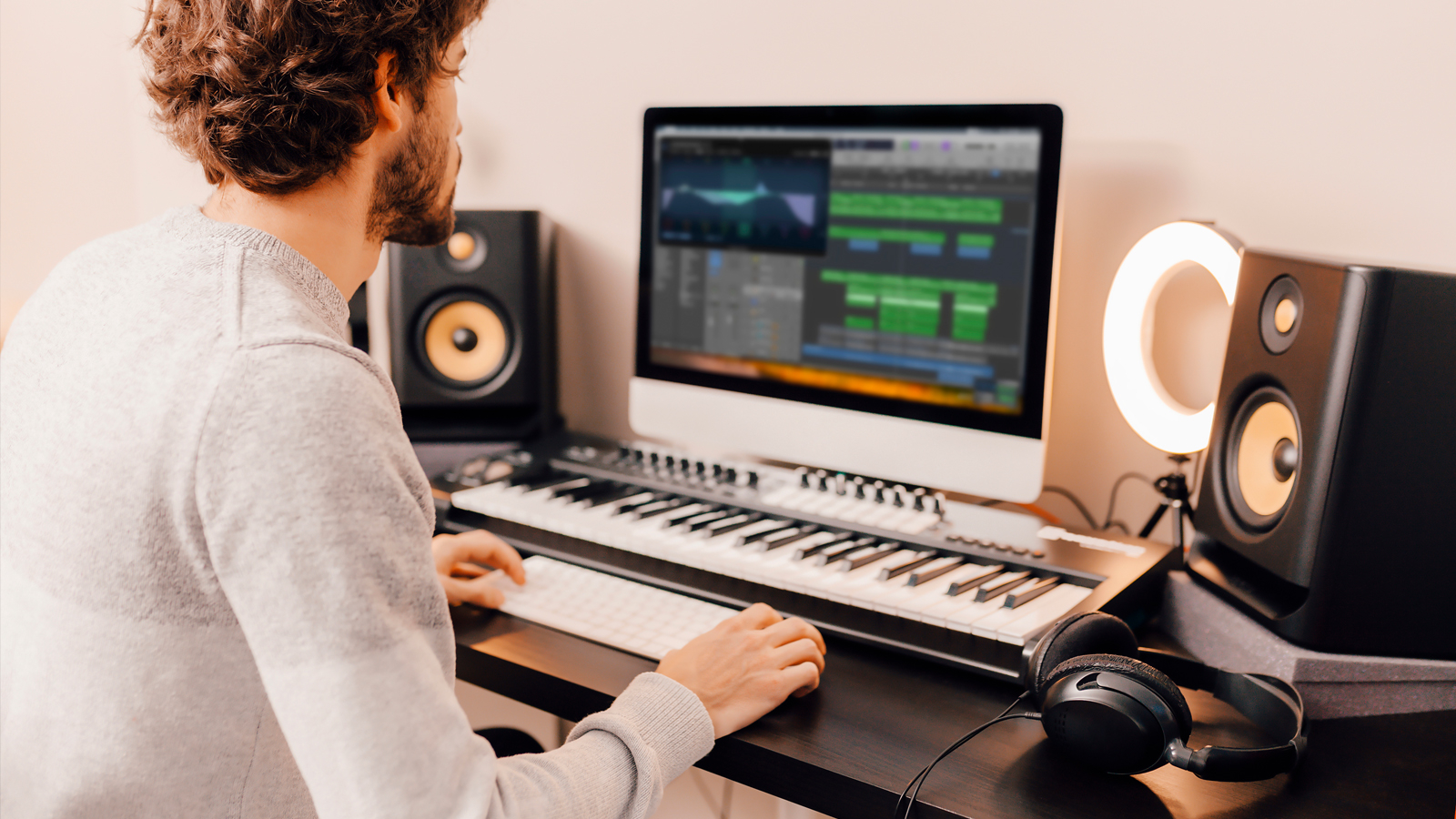
Further reading
MusicRadar further reading…
Your first port of call should be to establish what the strongest DAWs on the market are right now, thankfully we've got just the thing with our comprehensive list of the best DAWs to buy in 2024
If you want an alternative to the big hitters, or just want to save your money, check out our list of free DAWs
The most recent version of Apple's staple DAW Logic Pro was released earlier this year, want our take? Read our in-depth review here
Similarly, we saw the launch of Ableton Live 12 in 2024, our review of which can be found here
While Cubase 14 has just been released, our most recent review of its 13th version can be read here
Here's a great feature that users of any DAW can get a kick out of: 8 mixing and mastering tips that every bedroom producer should know.
One of our favourite DAWs for getting really creative with sound design is Bitwig Studio - here we pit it against Ableton Live to see which comes out on top.
We spoke to the key minds behind the aforementioned Bitwig to mark the uber-flexible DAW's tenth anniversary - read our roundtable interview here.
DAWs have become incredibly central to modern music production, but how has that affected the creative process? A study from the Queen Mary University in London suggests that the DAW-dominated landscape might have had a negative impact…
As detailed in our Start Here guide to MIDI (which we also recommend you read as an accompaniment to this feature) MIDI and DAWs are natural bedfellows, so you should check our our guide to 7 ways of working smarter with it!







